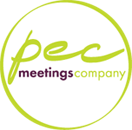Your Meeting and the Site Selection Process
When it comes to hosting a meeting or convention, an unattractive and ill-equipped location can spell disaster for an event that you have taken considerable time to plan. The site selection process is a crucial piece of planning, and inspections of viable hotel properties are mandatory. You are seeking to ascertain that the destination including hotels, off-site venues, also air and ground transport, can host your meeting exactly to your specifications.
In an effort to make a more informed decision, careful consideration must be made in creating a detailed RFP (Request for Proposal). Consider the basic outline of your meeting parameters: the anticipated number of attendees, sleeping room requirements and room types, hospitality needs, meeting room requirements that may include general session, breakout rooms, and separate rooms for lunch, and dinner, etc. Viable properties will emerge through the initial informational site search.
Additional information may need to be added based upon feedback from attendee evaluations of past meetings. Pay close attention to comments attendees have provided or colleagues may have observed. The proximity of all meeting space, bleeding of sound between air walls, the elevator and escalator accessibility, restroom convenience, appropriate space to comfortably accommodate all activities, outlets, hotel locality in relation to off-site entertainment options and city attractions, food quality, etc.
Be prepared for what you wish to see before the site tours. If the need for a hospitality suite that can accommodate 50-75 people is required, be sure to ask that hospitality suite options be part of the site tour. You will most likely be shown a luxurious suite that is opulent and lavish. Don’t let the glitz and glamour overshadow the technicalities. Does the suite require an elevator access key to reach the floor? Does the suite have a restroom off the parlor area so that guests do not have to walk through a sleeping room to get to it? Can the sleeping room be closed off to the parlor area?
If your attendees are comprised of predominantly men who are in session all day with little free time, do you really need to see the spa or swimming pool? Be upfront with your sales manager regarding what you do and do not need to see. You will most likely have several hotels to tour and the last thing you want is to be squeezed for time with each property.
When meeting the sales manager in person, and before you start the tour, take some time to sit down and expound upon your meeting goals and objectives. Describe your attendees and don’t just share their demographics, but who they are and what the purpose of their attendance is. Are they getting continuing education credits? Are they members of the organization? Are they industry suppliers, spouses, families? Describe the typical behaviors of your attendees. If they all arrive 15 minutes before a buffet breakfast is scheduled to be served, let the sales manager know this. Any history that you can provide is very beneficial to the hotelier, as it may encourage creativity in showing you hotel elements that might be of special interest or appeal to your attendees.
Create a simple Destination Assessment Form to help guide your note taking so you can better compare apples to apples following your site selection tours. Create a scale for each category 1-3, 1 being poor, 2 being average, and 3 representing excellent. Create a column for note taking to elaborate on any extreme ratings.
Consider these categories:
Parking and Transportation
Airport distance, group transportation availability and distance from the hotel, hotel shuttle to and from airport and associated costs, coach bus staging, self-park
Hotel Location
Distance to entertainment district, ease off the freeway, is it in a safe area, are there other hotels in the area, is the lobby large, is the front desk accessible and well-staffed, are elevators and escalators easy to locate, is there a concierge, is the outside appearance attractive and inviting
Hotel Rooms
Are fire exits clearly marked, are the rooms spacious, do they offer amenities, are the rooms ADA compliant, is there free internet, direct television, desk, reading lights, shower, bathtub, sink and mirror separate from the toilet and shower area, room design (modern, old world charm), serve-u bar, number of double queens, kings, types of suites, hospitality suite options, desk lights, emergency speakers, data port
Meeting Rooms
Any meeting room obstructions, house sound, built in screens, air walls and ability to block out sound, on-site A.V. support, proximity and adequate number of rest rooms, temperature control in each room, detailed floor plans, CAD drawings, condition of room, tables, chairs, linens. Is lighting adequate, list of equipment inventory and extra charges, type of room key and security, registration area, coat check,
Safety and Emergency Procedures
Evacuation procedures, emergency protocol, 24 hour security, smoke alarms and sprinkler system, safe deposit box, staff trained in first aid and CPR, conceal and carry regulations
While touring the hotel, remember always think logically as you must experience the sights, sounds, service, and product from the perspective of your attendees.
Knowing what your attendees value the most in a meeting facility and effectively communicating what you need from a hotel to ensure a successful conference are essential to conducting a successful site inspection. Keeping those factors at the forefront of your decision-making process ensures you’ll find the right property for your meeting.
Before you book, take a long look








